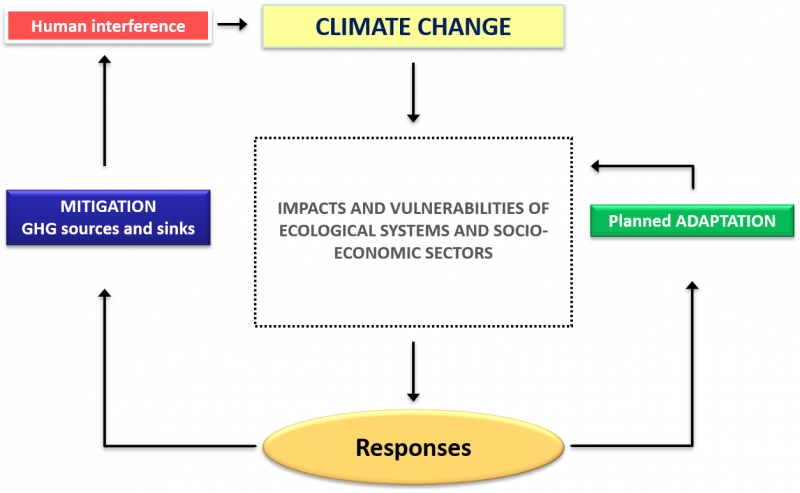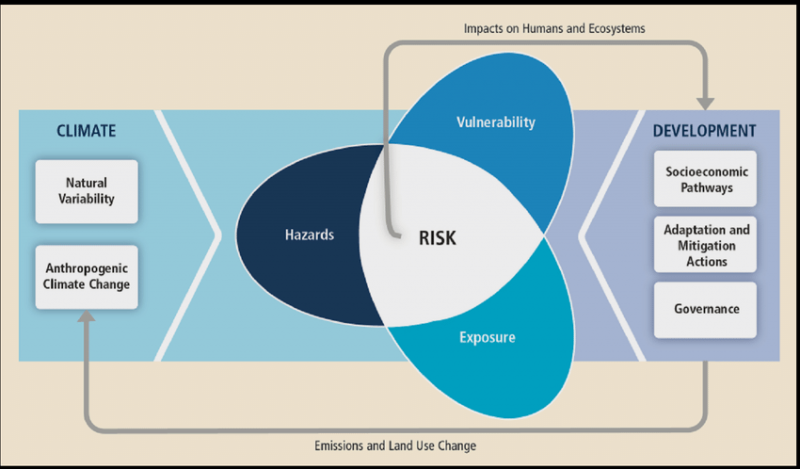Climate change is already occurring and is expected to continue: in Spain average temperatures are increasing by about 0.3°C per decade, rainfall distribution is changing, natural water resources are decreasing in most of the basins, sea levels are rising...
Even if we manage to reduce the emissions that cause climate change, and thus avoid its worst consequences, these trends will continue in the coming decades due to the inertia of the climate system. Complementary adaptation actions will be necessary.
Climate change adaptation measures are aimed at reducing risks, limiting impacts, reducing vulnerabilities and increasing the resilience of human and natural systems to climate change, including biodiversity, forests, coasts, cities, agriculture, industry, etc.
We generally speak of two responses to climate change: mitigation and adaptation to climate change.

Source: Cambio climático 2014. Impactos, adaptación, y vulnerabilidad. Resumen para responsables de políticas. IPCC
Mitigation strategies aim to reduce net emissions of greenhouse gases into the atmosphere, while adaptation strategies aim to limit the risks associated with climate change.
Although they are different strategies, it is important to recognize that mitigation and adaptation are clearly complementary: without mitigation, our adaptive capacity will be overwhelmed more quickly. On the other hand, adaptation is essential to cope with the impacts that climate change is already having today and will inevitably have in the future. Moreover, adaptation that is not low in greenhouse gas emissions is meaningless, since it intensifies the change whose effects we wish to avoid, and mitigation that does not integrate adaptation criteria may be at risk from the impacts of climate change.
The levels of risk in the face of climate change are conditioned by three factors: exposure, sensitivity and adaptive capacity. In the field of adaptation, interventions on all of them are proposed to limit vulnerability to climate risk.

Source: Cambio climático 2014. Impactos, adaptación, y vulnerabilidad. Resumen para responsables de políticas. IPCC.
For example, to prevent the health impacts of heat waves, it is possible to act on exposure (avoiding going outside during the hours when the temperature is highest), on sensitivity (promoting generic health improvements in at-risk groups) or on adaptive capacity (providing practical information on how to act in the event of a heat wave).
Public action to address climate change is coordinated and organized in Spain through the National Climate Change Adaptation Plan (PNACC), which establishes the national frame of reference for public efforts for the generation of knowledge and the construction of adaptive responses to climate change.
The challenge: to ensure the long-term resilience of natural and socioeconomic systems.
Adaptation strategies and actions increase resilience and have co-benefits, including improvements in human health, livelihoods, social and economic well-being, and environmental quality.




